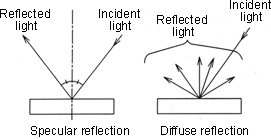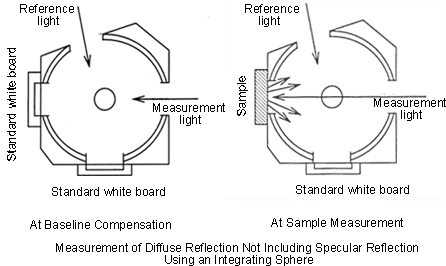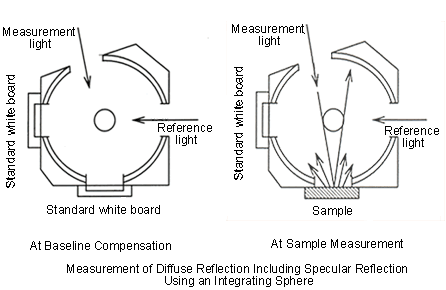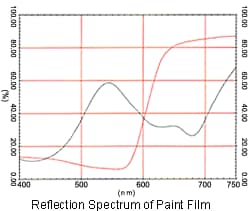Relative Diffuse Reflectance Measurement
Diffuse Reflectance Measurement

Since light cannot penetrate opaque (solid) samples, it is reflected on the surface of the samples. As shown in the figure, incident light reflected symmetrically with respect to the normal line is called "specular reflection," while incident light scattered in different directions is called "diffuse reflection."



With integrating spheres, measurement is performed by placing the sample in front of the incident light window, and concentrating the light reflected from the sample on the detector using a sphere with a barium sulfate-coated inside. The obtained value becomes the reflectance (relative reflectance) with respect to the reflectance of the reference standard white board, which is taken to be 100%.
When light is directed at the sample at an angle of 0°, specular reflected light exits the integrating sphere and is not detected. As a result, only diffuse reflected light is measured. Models of integrating spheres with different angles of incidence are available, enabling measurement of both specular and diffuse reflected light in instances such as these.


